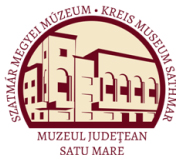Marta, Liviu: The Late Bronze Age Settlements of Petea-Csengersima (Satu Mare, 2009)
IV. Habitation of the Lăpuş II-Gáva I Archaeological Culture
simultaneous employment of the two ornamental stiles is even clearer since a possible secondary position of the excised pottery here is ruled out: the settlements at Berveni and Carei are situated in the former cultural area of the Hajdúbagos—Cehăluţ culture and not within that of the Suciu de Sus culture. Considering the import character of the excised pottery in the area, its frequency in the settlement at Carei can be considered as being intense. The bronze deposit found within the setdement (Cincu-Suseni/ Kurd type) 653 indicates that the use of the excised-incised pottery here continued untill the HaA stage (alongside bi-chrome channelled pottery). A late date for excised-incised pottery (in the Ha A1 stage) is suggested also by its association with the iron celt in tumulus no. 1 at Lăpuş636. Summing up what has already been stated, it can be said that for the beginning of the Lăpuş II—Gáva I settlements at Petea—Csengersima there can be considered a time span between the end of the BzD and the beginning of the Ha A1 stage. The proposed time interval has in view the long life of some bronze pieces in this period which are present in Uriu—Opályi type deposits as well as in those of Cincu—Suseni type. The proposed longer dating of these types of deposits is also taken into account637. The settlement at Petea— Csengersima, as the assembly of discoveries from the Upper Tisa Basin and the north of Transylvania (settlements, necropolises, bronze deposits with clay vessels) attest close ties between excised-incised pottery and deposits of Uriu—Opályi type and between those of Lăpuş II — Gáva I type with Cincu-Suseni type deposits. The researched area in the settlement at Petea—Csengersima did not offer data concerning the duration of the Lăpuş II—Gáva I habitation or about the end of this cultural horizon. The pottery is relatively unitary, non of the archaeological complexes offer data for a possible closeness to the finds of the habitation that follows (Gáva II). The settlements from Carei area do not provide additional elements concerning a link with the Gáva II phase, the settlements at Berveni and Carei being dated during the BzD—HaA 1 phases655 656 657 658. Based on the attribution to the Kurd type of the bronze deposit from Nagykálló659, but also on the association between bronze finds and pottery, the Gáva I phase is dated in the north-east of Hungary during the Late Bronze 2/b stage (Ha Al)660. The Lăpuş II phase is dated by C. Kacsó till the middle of the HaA phase661. A later date for the necropolis at Lăpuş (till the middle of the HaA2 phase) was proposed by V. Vasiliev662. The main argument for this date is based on the fact that some bronze finds from the necropolis have a longer existence that exceeds Ha Al. Recent research in the necropolis at Lăpuş lead to the discovery of new finds of this kind663 but also of a more recent pottery attributed to the Lăpuş III phase664. For the dating of the final period, of the Lăpuş II phase the finds of the Gáva culture can be taken into consideration, regarded as subsequent to the Lăpuş II phase. In this sense the discoveries from the north of Moldova are important, within which the Lăpuş II phase is considered an element of genesis. Based on some clear affinities of the pottery with that from Lăpuş and based on the dating in the HaA phase of certain metal finds, the beginning of the Gáva-Holihrady culture in the north of Moldova is placed in the first half, or towards 655 Németi 1990, p. 47. 656 Rusu 1972, p. 16; László 1975, p. 25-26; Vasiliev 1983, p. 40. 657 Gumă 1993, p. 262; Kacsó 1996, p. 238-239. 658 Németi 1990, p. 48. 659 Mozsolics - Hegedűs 1963, p. 252, 254-262; MozsoLics 1985, p. 154-155. 66° Kemenczei 1984, p. 86, 96 (chronological table). 661 Kacsó 1990a, p. 46; an earlier date having been proposed initialy (Kacsó 1975, p. 68). 662 Vasiliev 1983, p. 41. 663 Kacsó 2001, p. 238-239. In this sense the case of the Unter Radi type fibula recendy discovered can be mentioned (Kacsó 2001, abb.28/H12, 4). Considered as being a main dating find of the Ha Al stage, in the case of the variant from Cernat it represents a longer use, not only at Cernat (Vasiliev 1983, p. 50), but also in the deposit from Ghirişu Român (Metzner-Nebelsick 2005, p. 328) or in the case of the setdement at Porumbenii Mari (Marta 2003, p. 356). 664 Kacsó 2006a, nr. 103; Kacsó 2007a, 106. 92
